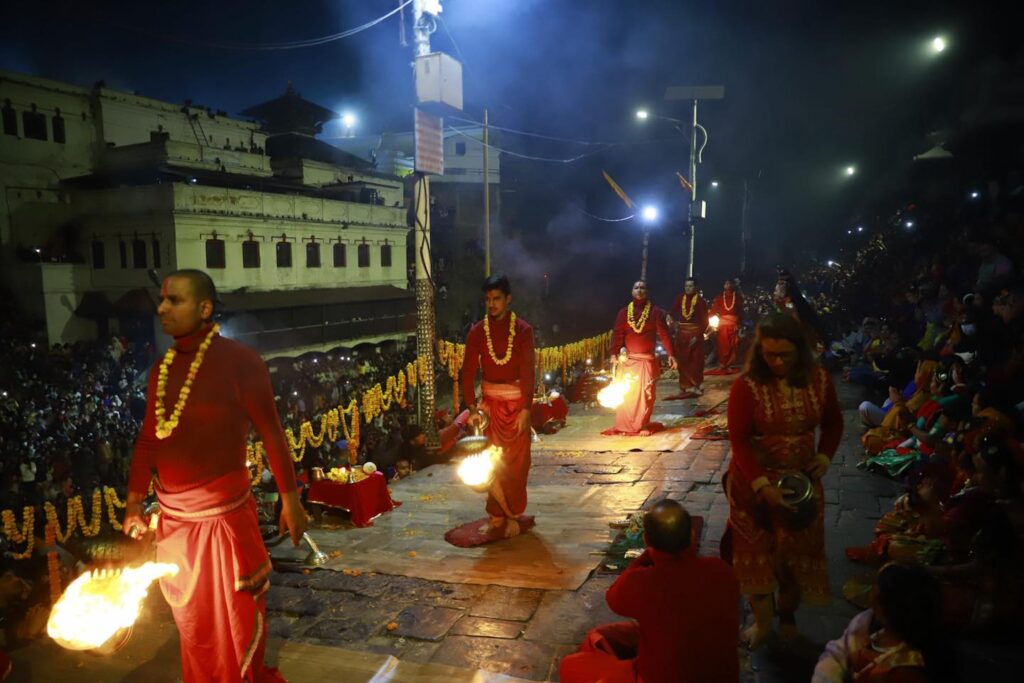Aarti, also known as aratrika or arathi, is a fundamental component of all pujas, and it is occasionally conducted independently of a puja ceremony. It involves a straightforward ritual where a small metal lamp with a handle containing lighted wicks soaked in ghee or camphor is waved before a deity. Arati ceremonies occur in temples and private puja rooms and are even performed to honor sacred rivers like the Ganga and Bagmati or as a gesture of welcoming guests.

The term Aarti also refers to the songs sung in praise of the deity when lamps are being offered.
The Aarti ritual originated in the Vedic fire ceremonies and was known as homa. While its primary action involves waving a lighted lamp fueled by oil or ghee, the complete arati ritual encompasses waving various items such as a conch filled with water, a piece of cloth, a flower, and a whisker made of peacock feather or a similar material. This ritual symbolizes offering the five elements of nature (pancha bhuta) to the divine.
- The lighted lamp represents fire (agni),
- the water-filled conch symbolizes water (aapa),
- the cloth signifies ether (aakasha),
- the flower represents earth (prithivi) with its characteristic fragrance, and
- the hand fan or whisker symbolizes air (vayu).
Through this symbolic act, the worshipper offers the entire universe, represented by its elemental constituents, to the deity during worship. The Aarti ceremony highlights the magnificence of God, the omnipresent One, and concludes with the worshipper bowing before the deity, symbolizing complete surrender.
Arati, typically performed during worship ceremonies, involves waving a metal lamp (often made of silver, brass, bronze, or copper) around the deity’s image or idol, accompanied by devotional songs and musical instruments. The lamp is waved circularly and clockwise around the deity to honor and invoke blessings.
Following the Arati, the lamp is placed on the Arati plate. This plate is then passed to the assembled devotees, who slide their forefingers and palms over the lamp, touching their eyes or foreheads with the sanctified flame to symbolize receiving divine blessings. Sometimes, devotees also offer monetary donations in the Arati plate. Additionally, the plate may contain flowers, incense, and wet rice grains, adding to the sacred atmosphere of the ritual.
Arati is performed one to five times daily, typically concluding with a puja or bhajan session. During the ceremony, the worshipper faces the deity or divine element, such as the Ganges river or a sacred tree, and focuses on the divine form by gazing into its eyes. This act is believed to establish a connection with the divine essence residing within the deity. Arati symbolizes the auspicious commencement or culmination of a sacred occasion.
